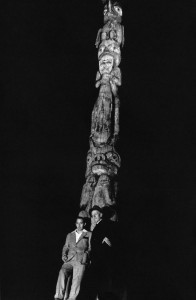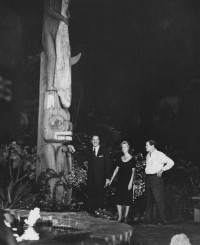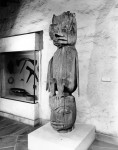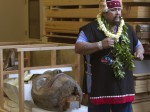#History |
Totem pole looted by John Barrymore returns home Posted: 26 Oct 2015 08:29 PM PDT
Tuxecan had been abandoned 30 years earlier when a clan leader convinced the Tlingit tribe members who lived there to move south to the town of Klawock where there was a new school and the state’s first cannery. They left behind a forest of totem poles which the villagers occasionally returned to tend to, but over time began to tip over and decay, a process that the Tlingit held to be part of the natural lifecycle of kooteeyaa (totem poles). Tlingit totem poles were carved from single trunks of Western red cedar and raised outside people’s homes. The animals from a clan’s crest were carved on the poles, but each one had a different combination of figures and a different meaning. They celebrated family history, could commemorate a person or event or broadcast a wrong done to the pole’s owner. Some were funerary monuments that included the ashes of the dead in bentwood boxes placed in niches in the back the pole. While the were not objects of religious veneration per se, they were and are held to be sacred. The higher the pole, the more prestigious it was. The highest poles in Tuxecan reached 30 feet or so, which means the 25-footer Barrymore stole was a very important piece in its day. Its importance has only increased with the passage of time and the loss of almost all of the more than 100 totem poles that once graced Tuxecan. Only two other original totem poles survived, moved to Klawock along with the tribe at the turn of the last century. The totem pole makes an ominous appearance in Gene Fowler’s biography of John Barrymore, Good Night, Sweet Prince. Barrymore was warned that removing the totem pole would bring him back luck, and Barrymore, who had an interest in diverse religious traditions, was somewhat concerned that the tribal gods “might take a notion into their whimsical noggins to wreak vengeance on the thief.” If they did, they used his preexisting alcohol addiction to get to him. John Barrymore died of cirrhosis of the liver in 1942.
Meanwhile, University of Alaska Anchorage anthropology professor and Tlingit expert Steve Langdon stumbled on the totem pole in the 1990s while researching the Tlingit villages of Prince of Wales Island in a Ketchikan museum. He was looking through some old photographs when he came across a snapshot of Vincent Price standing in front of the totem pole. The cactuses indicated that this picture had not been taken in Alaska. Langdon consulted with Jonathan Rowan, a carver and cultural educator from Klawock, who helped him identify the pole in photographs of Tuxecan from the late 19th century.
If you’d like to learn more about the totem pole saga, Steve Langdon’s lecture at the University of Alaska Anchorage last year is on YouTube in two parts. |
| You are subscribed to email updates from The History Blog. To stop receiving these emails, you may unsubscribe now. | Email delivery powered by Google |
| Google Inc., 1600 Amphitheatre Parkway, Mountain View, CA 94043, United States | |





